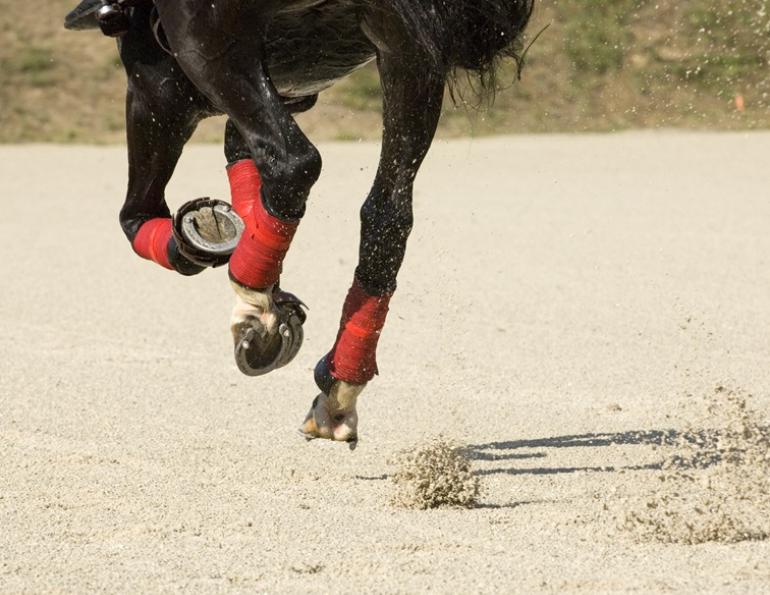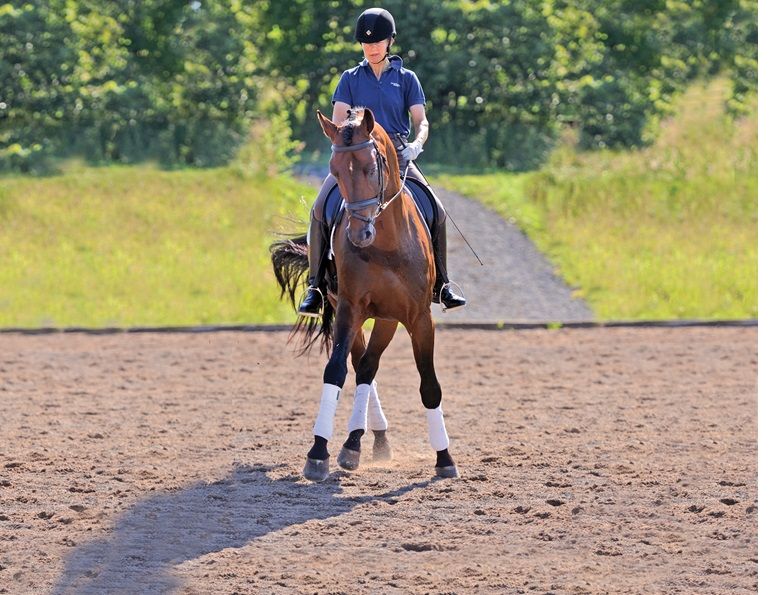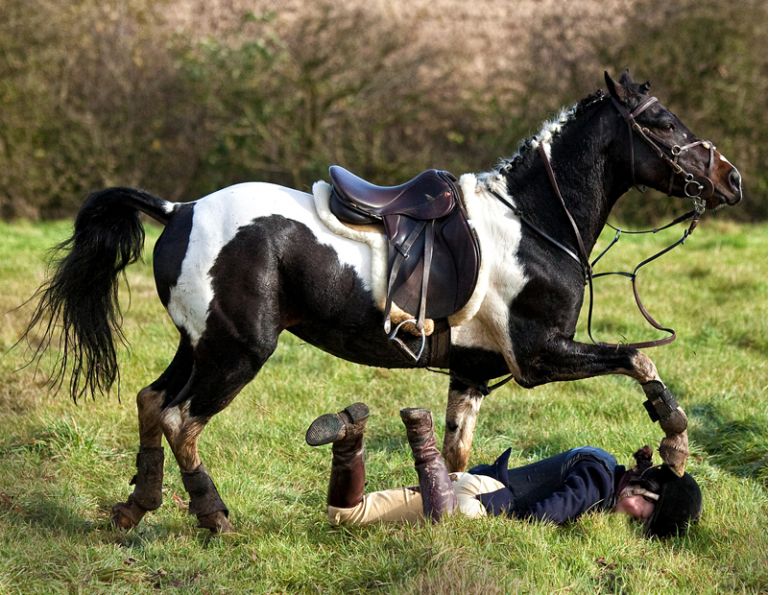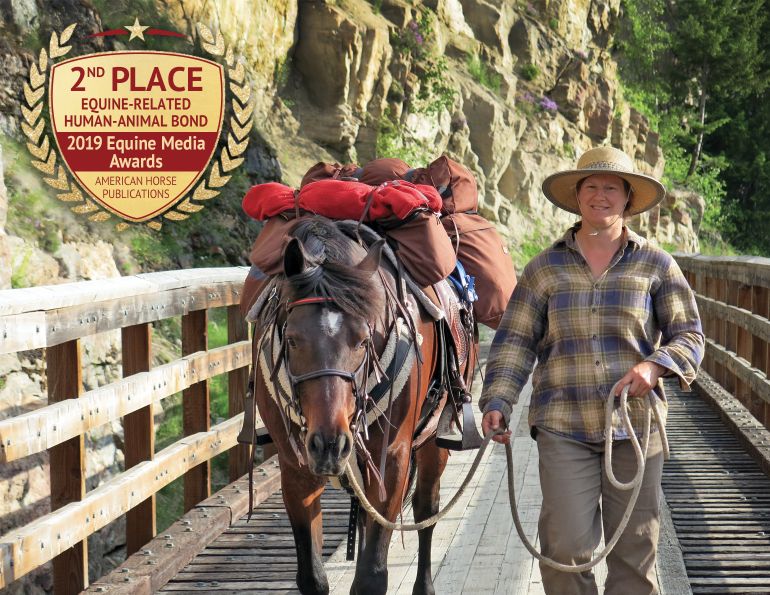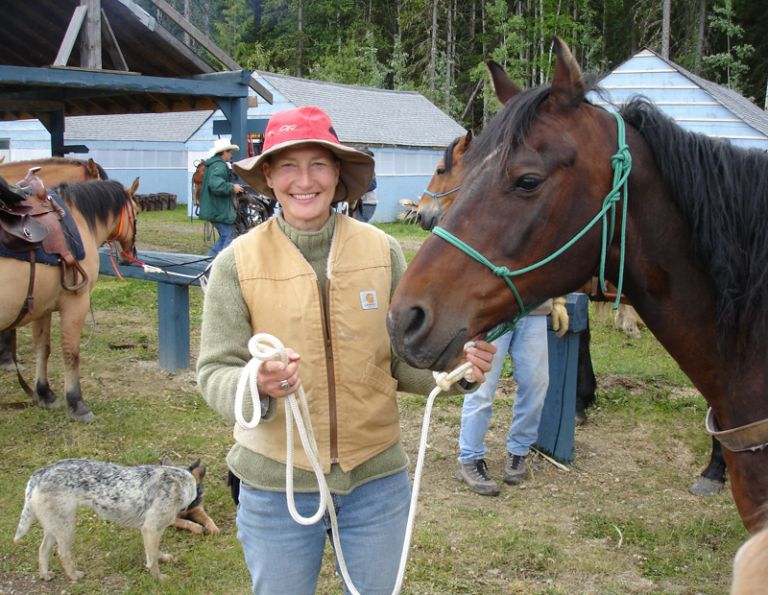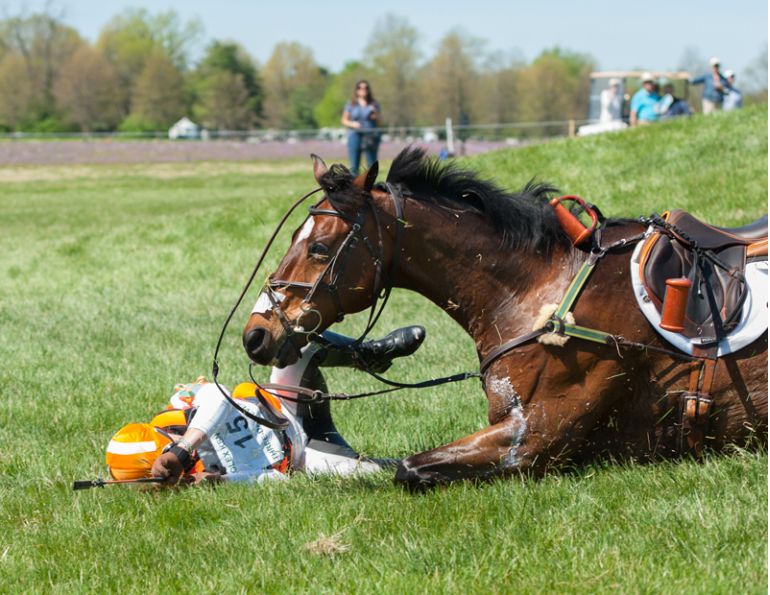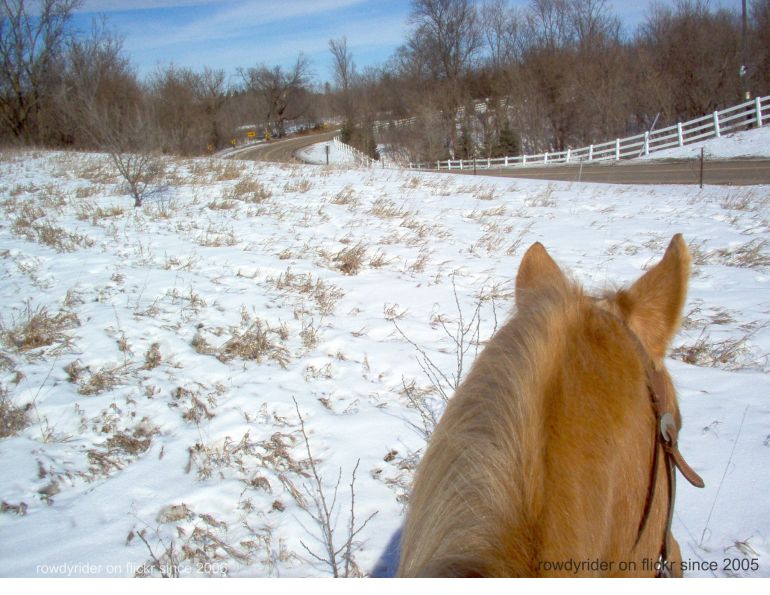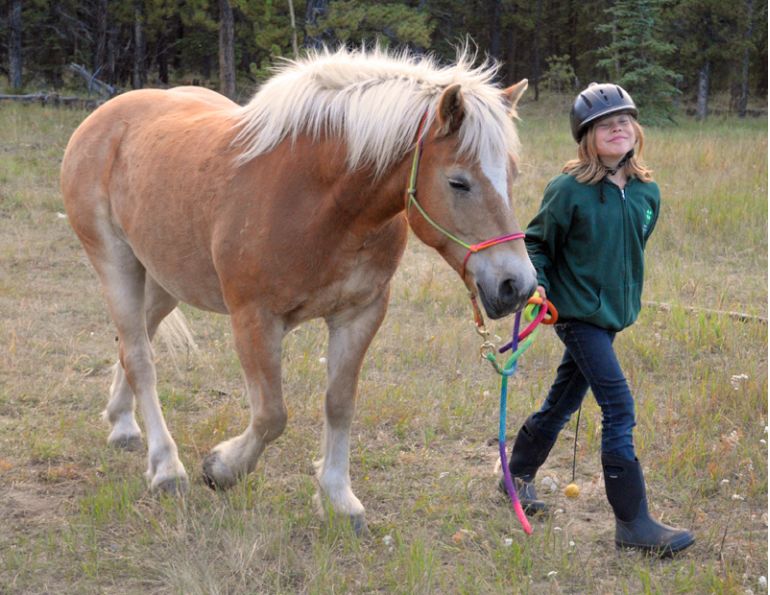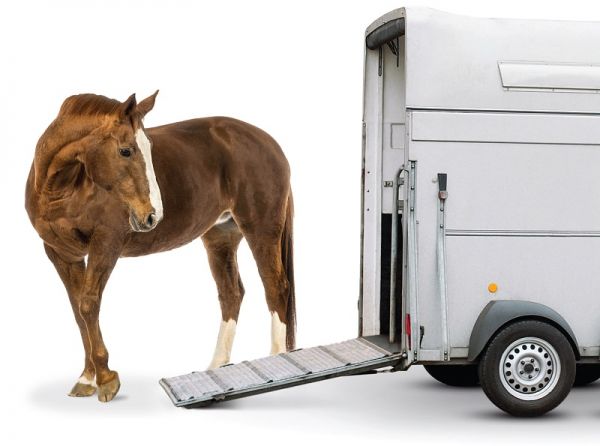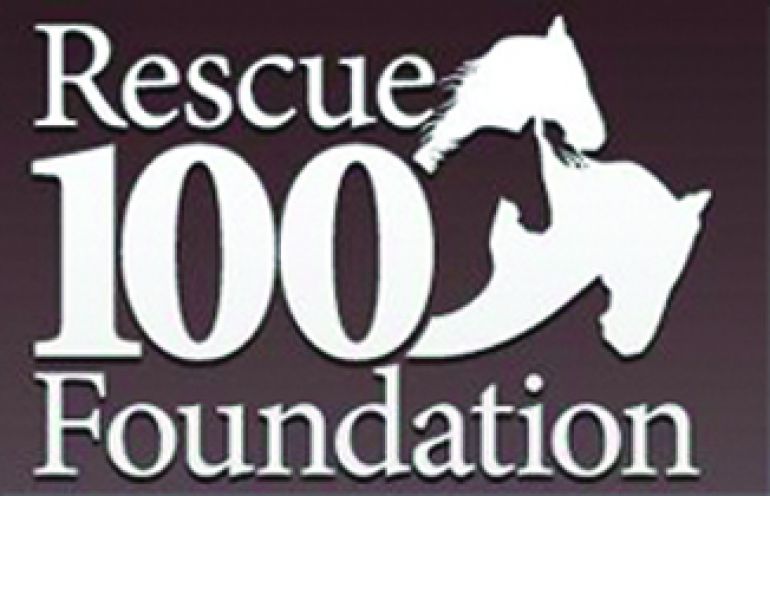By Stan Walchuk, Jr.
If horses could talk they would tell us that the most important part of their body is their feet. The foot allows motion and protection: flight from predators, fighting, feeding, and breeding. In other words, survival itself is only possible through the almighty foot.
If you ask experienced trail riders what part of the horse’s body is the most important they too will say the foot. Working under loads and over varying trail conditions demands a good foot. All trail riders must avoid poor feet and a poor working relationship with their horses’ feet if they hope to avoid physical breakdown of hooves and legs, trauma on the trail, vet bills, difficult and dangerous handling situations, and, in general, enough anguish to make a sane person quit. In this, the first of two articles on the foot (see "The Almighty Foot, Part 2"), we will look at how to work with horses’ feet.
First, it should be clearly understood that movement of the horse’s feet (and the rest of the horse’s body) is tied directly to the horse’s mind. Free movement of a horse’s feet is only possible when his mind is willing and respectful. Stops, starts, turns, leading, and picking up the feet to clean, trim, and shoe are activities fundamental to trail riding and they happen with proper training, not by accident. To attempt to physically lift the foot of a horse that is untrained, fearful, or whose mind is clouded with unwanted baggage is fool’s play and possibly dangerous.
You have the willing connection from the mind to the foot when you can lead your horse with a front foot rather than the lead rope. Pulse lightly on the lead and then the foot rope to start and eventually see if the horse will lead with pulses on the foot rope only.
Every time you use a lead rope, halter, or bit and bridle, there must be an instant connection to the feet. This connection can only happen if the horse’s mind is willing to respond and the mind will only become willing and responsive with proper groundwork. If your horse is stubborn about giving his feet, if he balks, pulls, or is slow to respond to cues, you will be amazed at how freeing up his feet will make him a better horse.
Because horses’ feet are their means of protection and survival it is not surprising that they are often reluctant to allow us to handle those feet.
I have heard stories about Arabian sheiks in the desert who “break” horses by laying them down with trussed legs and walking on them with bare feet until they accept the presence and will of their owners. Once these horses are up and standing, their demeanor, apparently, is instantly transformed from wild desert ponies to submissive students.
Similarly, if you have watched ranchers geld horses, they tie up the horse’s legs, lay him down, and proceed with the operation. By the time the procedure is complete the horse has quit struggling, seemingly accepting his fate. Once these horses are released and standing they also seem to have an instant transformation and are more respectful and softer to move about.
Hobble-breaking has a similar effect on a horse. Whether or not a horse is well trained, once he is hobble-broke he will be more willing to accept handling of his feet and will generally be better behaved. If you own the feet, whether by favourable methods or not, you own the horse. Own the feet and own the mind – own the mind and own the feet.
Many trail riders have learned that the horse who balks when being trailer loaded often walks in freely after being lunged in a circle for a few minutes. The lunging reinforces the owner as the alpha being, and so the horse’s mind submits which frees up the movement of his feet and he walks into the trailer willingly, as if by magic.
In my early years of owning, training, and riding trail horses — from about 1970 until the mid 1980s — my training methods were pretty much the norm for backcountry riders in those times. A horse was sacked out (desensitized with a cloth, coat, rope, or sacking) and a rope was run through and around his back legs, usually in the manner of a scotch hobble. The back feet were toyed with, then lifted with the rope, whether the horse was willing or not. A struggle often resulted with the rope ultimately winning. The horse was then rubbed down, a saddle pad and saddle were placed on his back, and he was ridden, maybe while being led on the ground at first. If the horse behaved well he was considered a “good” horse; if not he was “stubborn,” a “knothead,” or worse, a “bucker.”
If you feel the horse may react aggressively or out of fear when you first attempt to touch his feet, use the end of a whip.
Desensitize the horse to touch, remove the fear of the whip, and most importantly teach the horse to stand perfectly still when you are tickling the lower leg area. If he lifts his leg then continue to gently tickle until he eventually puts his foot down, and then reward by removing the pressure (the whip).
The problem with this type of coarse training is that the horse does not give his mind and his feet willingly to the rider. For years my horses were not willing to move out on command, move over or back softly, and while being led did not instantly walk or trot out with the first cue, a very important feature on any good trail horse. The sad part is that it probably takes less time to have the horse join up and respond to cues willingly with round pen and lunge line work than it does with other methods.
So, now we’ll lift the feet of a horse that has been halter broke, desensitized, and has had some round pen or lunge line work. When approaching a strange horse, always do so cautiously but with confidence. Watch the horse’s demeanor for signs of fear or aggression. If the horse is calm enough then approach the shoulder first and calm the horse down with voice and a gentle touch, which will also serve to desensitize the horse in preparation for handling his feet. Rub the horse in the shoulder area, then the back, the base of the neck, the girth area, then work your way along the neck to the ears and along the belly to the groin area. From touching his body you will get a sense of how calm and forgiving he is before attempting to lift his feet. If the horse shows fear, aggression, or is generally uptight, keep a safer distance by taking the handle end of a whip and gently rubbing it over the back in the shoulder area first. This will also help eliminate the whip as an object to be feared.
Once your horse accepts your rubbing and attention it is time to rub the horse’s leg down from the shoulder towards the knee. With an unpredictable horse do this with the fine end of a whip — just tickle him as you go down the leg. If this is the first time the horse is having his feet worked with, he will often aggressively lift his foot, which is essentially pulling it away from you. Keep rubbing or tickling it. Eventually he will drop it back down, and when he does, instantly stop the rubbing as a reward for accepting your handling. Pause for a moment then repeat. Soon you can rub the horse’s leg and foot and he will keep it on the ground. When you reach this point continue with another foot.
Slide your hand down to the fetlock and ask the horse to lift his foot with a voice command while you lift up at the back of the fetlock and tap the front of the hoof. If this does not work, try squeezing the back of the leg bone just above the fetlock or squeezing the chestnut.
After your horse stands calmly with his feet being touched it is time to ask him to lift his foot. Rub down the leg then squeeze the backside of the leg bone just above the fetlock. The horse should lift his foot but if not, try squeezing the chestnut. At the same time you can lift the foot by grasping the long hair at the backside of the pastern. If you are not expecting any trouble, first simply lift the foot up by the pastern or lift the pastern hair and tap the front hoof to cue the horse to lift the foot. Because your horse has had voice commands for walking, stopping, etc. add a voice command like “give” or “up” to reinforce that you are expecting a response from the horse.
If the horse pulls his foot away and puts it down, immediately pick it up again. Once you have lifted the foot, try gently bobbing it rather than just holding it steady. This action often encourages the horse to relax and “give” you the foot. A moment after the horse relaxes and gives you the foot (it feels soft, no resistance), reward the horse by placing the foot down.
Start by rubbing at the shoulder and work your way down the leg. The horse should not give you his foot until you ask for it. If he decides to give it and you take it, he has control.
It is extremely important that you are in complete control. You decide when to pick up the foot and when to put it down. Absolutely do not take the foot if he lifts it for you before you ask for it. You may think he is being cooperative but rather, he is maintaining mind control and may chose to take it back when he wants. With the first few efforts, put the foot down after he relaxes it even for a moment. Once the horse understands that he is going to get his foot back he will be more willing to give it to you for longer periods. Rather than expecting long holding periods with one foot, move on to another foot after small successes and your progress will leap ahead.
If the horse leans on you do not attempt to lift or hold against his weight. Simply hold the leg and lower it as the horse’s body leans over. As the horse becomes unbalanced he will lift it back to the normal position or he will continue to lay down on the leg until he literally lies down, in which case just let him. Let the pastern go just before your hand touches the ground, then encourage the horse to stand up again, and repeat. Few horses will lay down more than once or twice before they understand it is simply easier to hold up their foot, providing they know that they get their foot back after they relax and give it to you! If your horse is in these learning stages, be sure that the lead rope is long enough that the horse can comfortably lay down if he is tied.
This one-inch soft cotton rope and bowline around the neck is the beginning of a scotch hobble, a method once commonly used to tie up a rear foot when a struggle was expected. With modern training methods there is rarely a struggle, but it is handy to play give-and-take. Ask the horse to give his foot, hold it for a moment, then give it back. Increase the holding time as the horse accepts the rope and gains confidence from knowing he will get his foot back.
Work with the front feet first. When working with the back feet of an inexperienced horse there is a greater danger of being kicked so be sure to desensitize the back end well using the whip as described for the front legs. Desensitizing the inside of the back legs by lifting the rope up and down inside the groin area makes handling the back feet safer and removes fear, which may be the main reason a horse refuses to give his back feet.
If you are not confident about the safety of the back feet you should use a cotton rope, in essence a scotch hobble set up. But rather than force a hind leg up, play a game of give-and-take by applying small amounts of pressure, take up the slack, and when the horse gives his foot for a moment, give it back.
Soon you should be able to hold up the foot for four or five seconds. Again, reward the horse by dropping the rope when he stops moving about and showing discomfort.
When lifting a hind leg, bring it forward, then take it straight back.
Cradle the foot in your lap at a height comfortable to the horse. If he fusses and pulls his leg forward, point the toe up and lift the leg higher until he settles down, then lower the leg again to a comfort zone.
When you attempt to lift the horse’s back pastern by hand be sure that you are far enough forward so that the foot cannot come forward and kick you. With a back foot, bring it forward before taking it back. When you bring it back the leg should travel straight back, not pulled out to the side of the body and then back. Hold the back foot cupped in your legs. How high you hold the leg depends on the height of the horse — the comfort zone is higher on a taller horse. If you lower the foot too much the horse may be inclined to take it back. If the horse does attempt to pull it back you can reciprocate by lifting it high and pointing the toe up, then lower the leg back down to the comfort zone once he stops pulling. Like the front foot, if he pulls the foot out of your hand you need to immediately pick it up again.
You may have noticed that lifting feet is really a game of mind control. You should always be the one making the decisions, so that you are in control of the horse’s mind and his feet. Spend time playing with and lifting feet. Keeping the horse guessing about your next move means keeping control of his mind. Once the horse gives his feet freely, clean and tap them to mimmick future trimming and shoeing.
In the past I have talked about the importance of never letting the horse come into your space uninvited. This is important for foot control as well. When the horse knows that you are dominant and have your own space, he will not push his body or feet onto you, meaning less chance of you being stepped on; and because he recognizes your control over space he is more likely to give to your commands when you enter into his space and ask for movement of his body, to lift a foot, or walk him into a trailer. A rude, pushy horse is less likely to give up his feet.
A lifetime with a horse can be a long time and you will thank yourself over and over if you take the time to properly train a horse to give and lift his feet. There are at least two moments in training when you must be very patient and not physically force the horse to comply with your wishes for fear of instilling a lifelong habit of refusal and fighting: when placing the bit in his mouth, and when lifting his feet. Persistence and patience are more than virtues!
Happy Trails!
To read more by Stan Walchuk on this site, click here.
All photos Courtesy of Stan Walchuk, Jr.
Main photo: There must be a direct connection from a willing mind to the horse’s feet. The horse must have the proper groundwork and be properly desensitized before you attempt to lift his feet.



